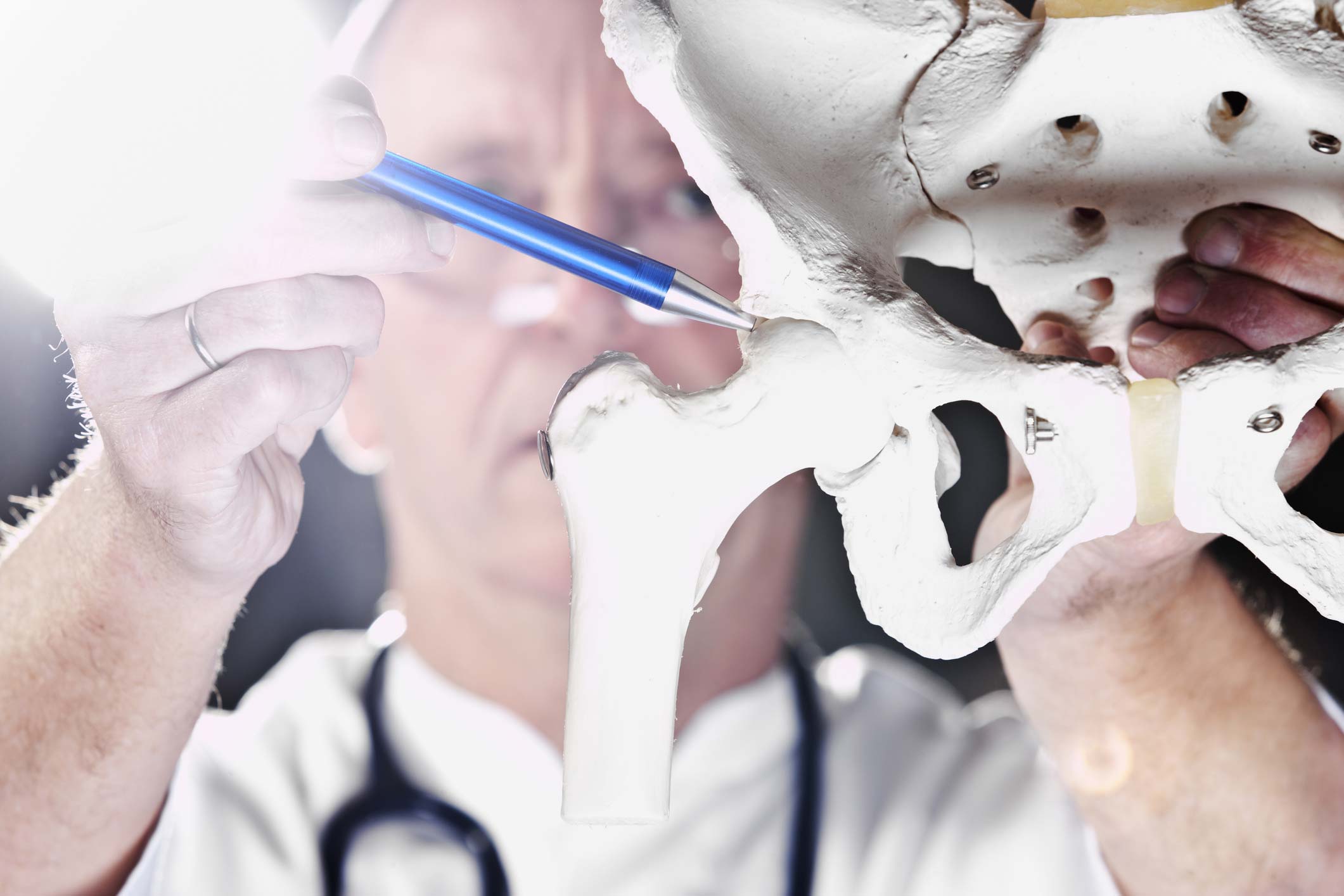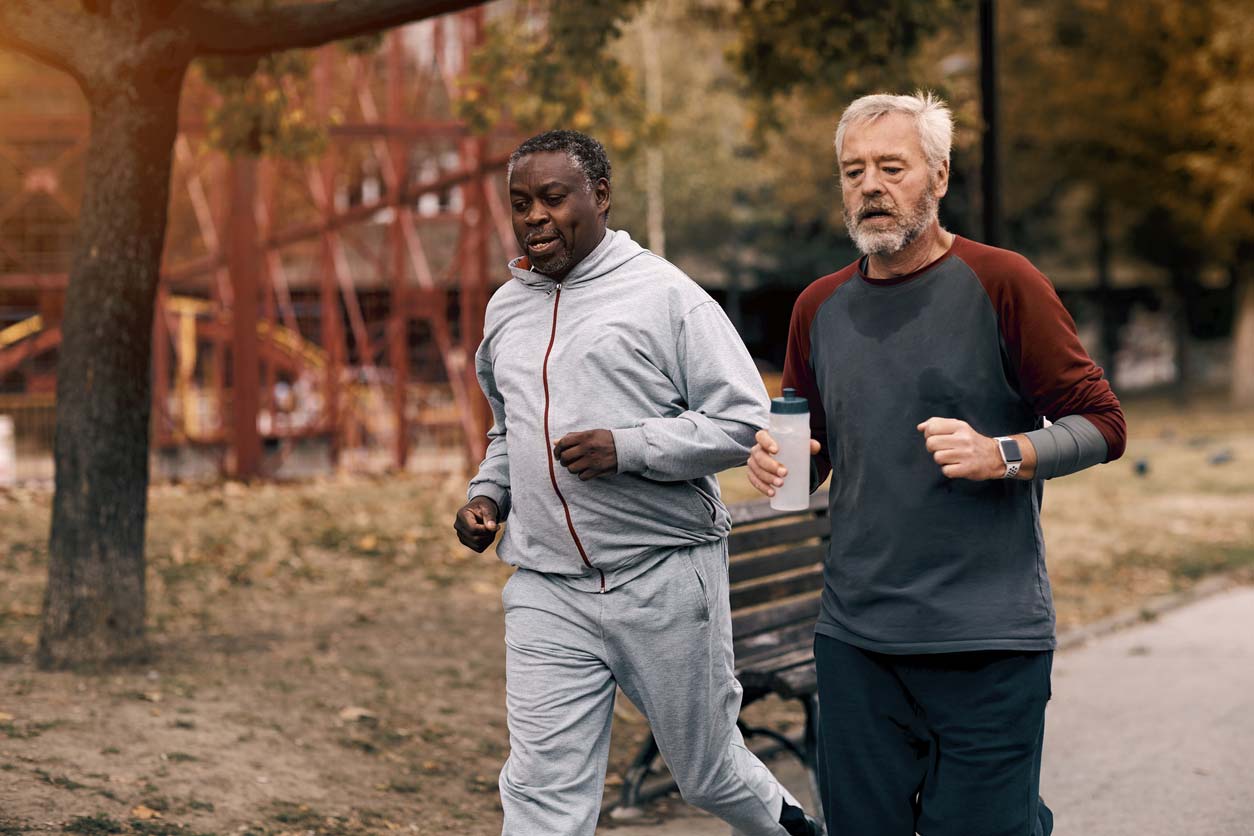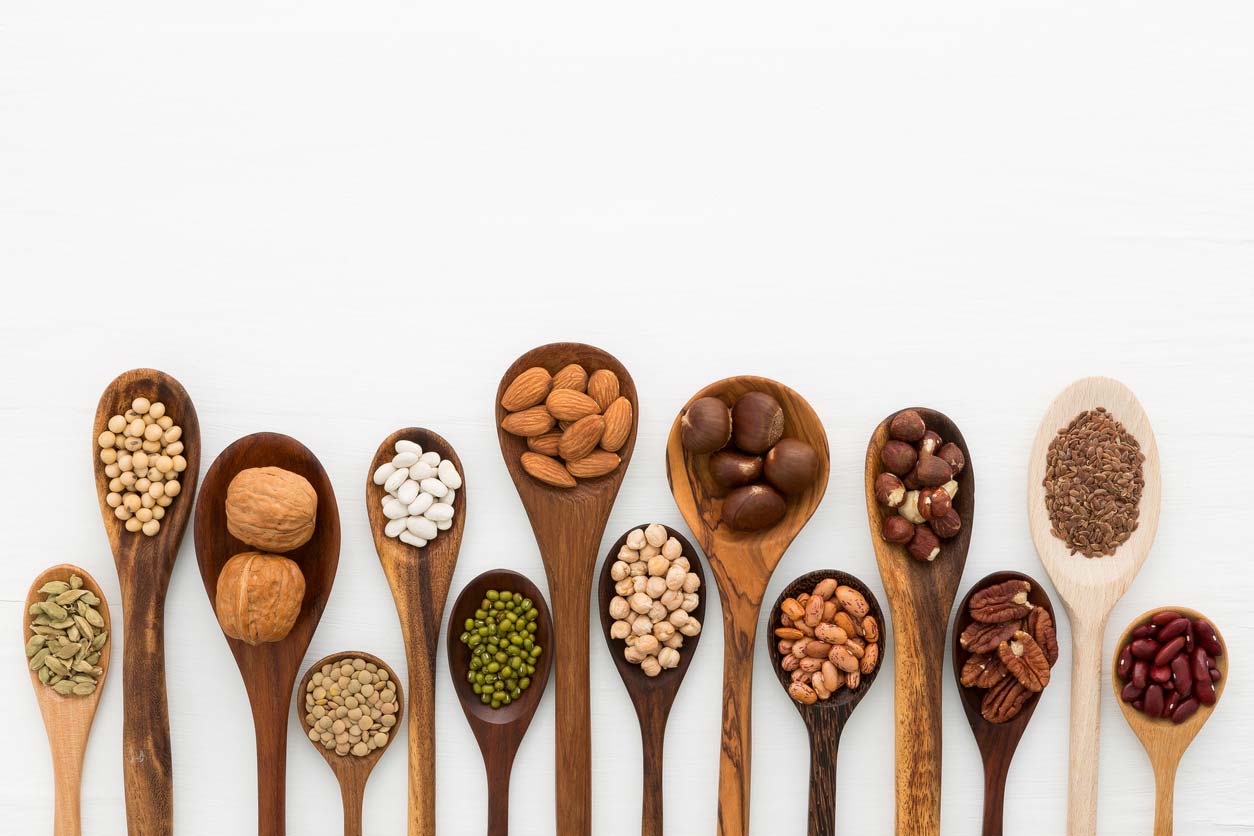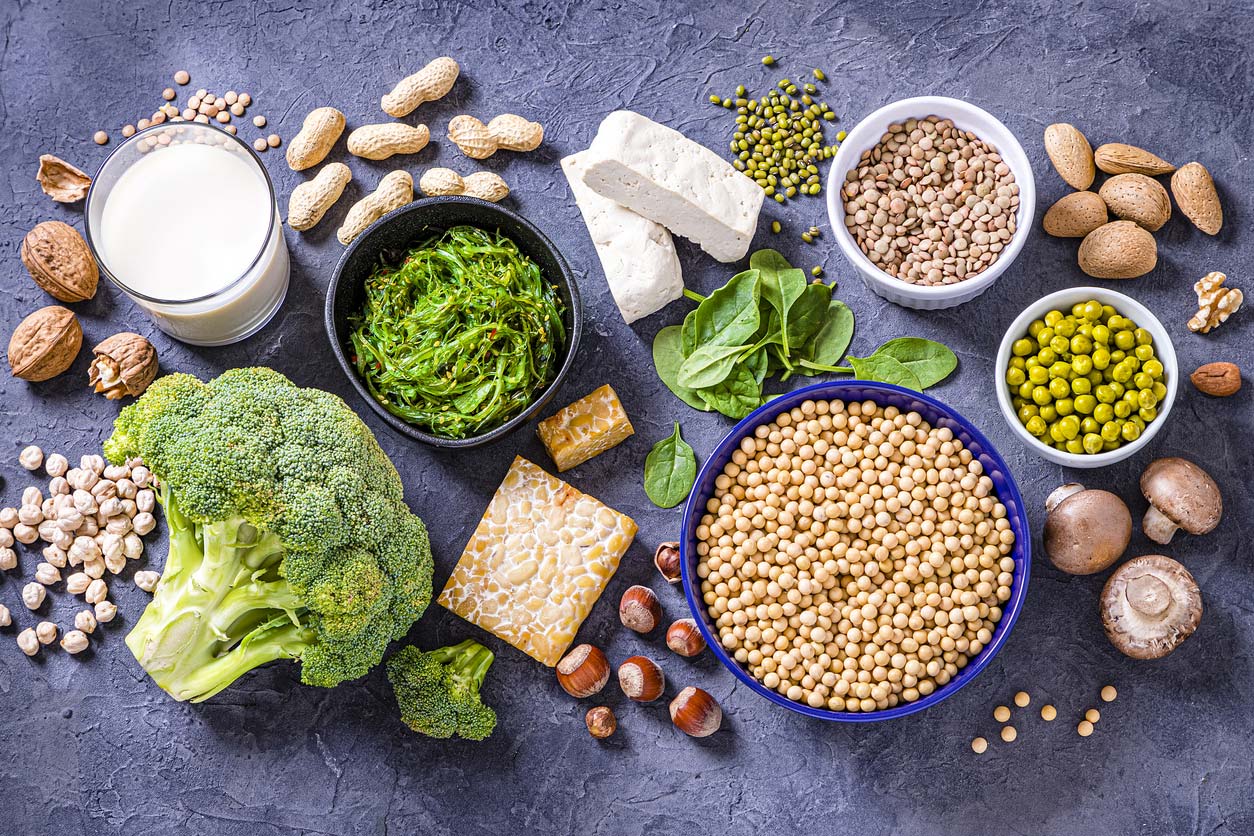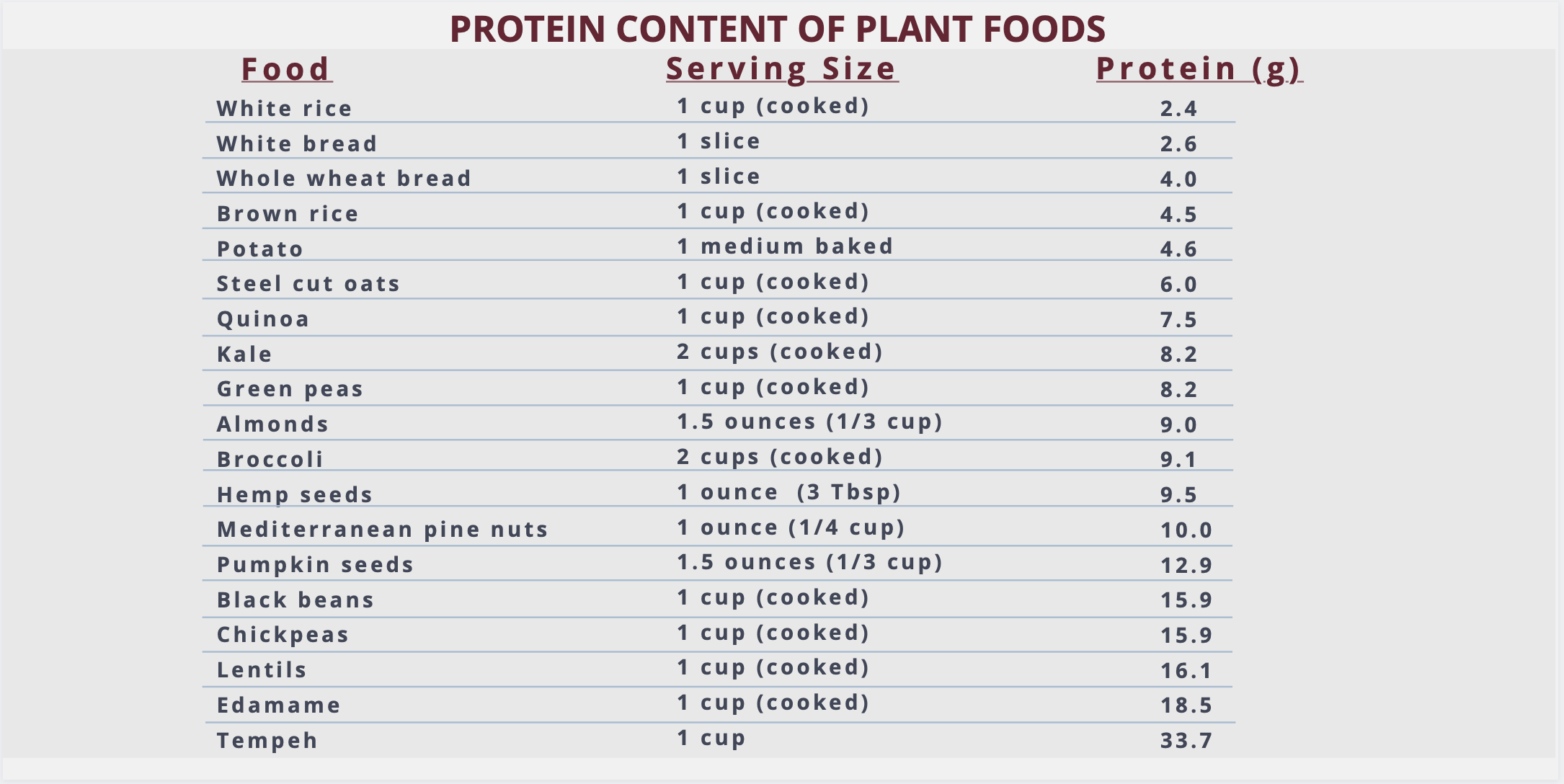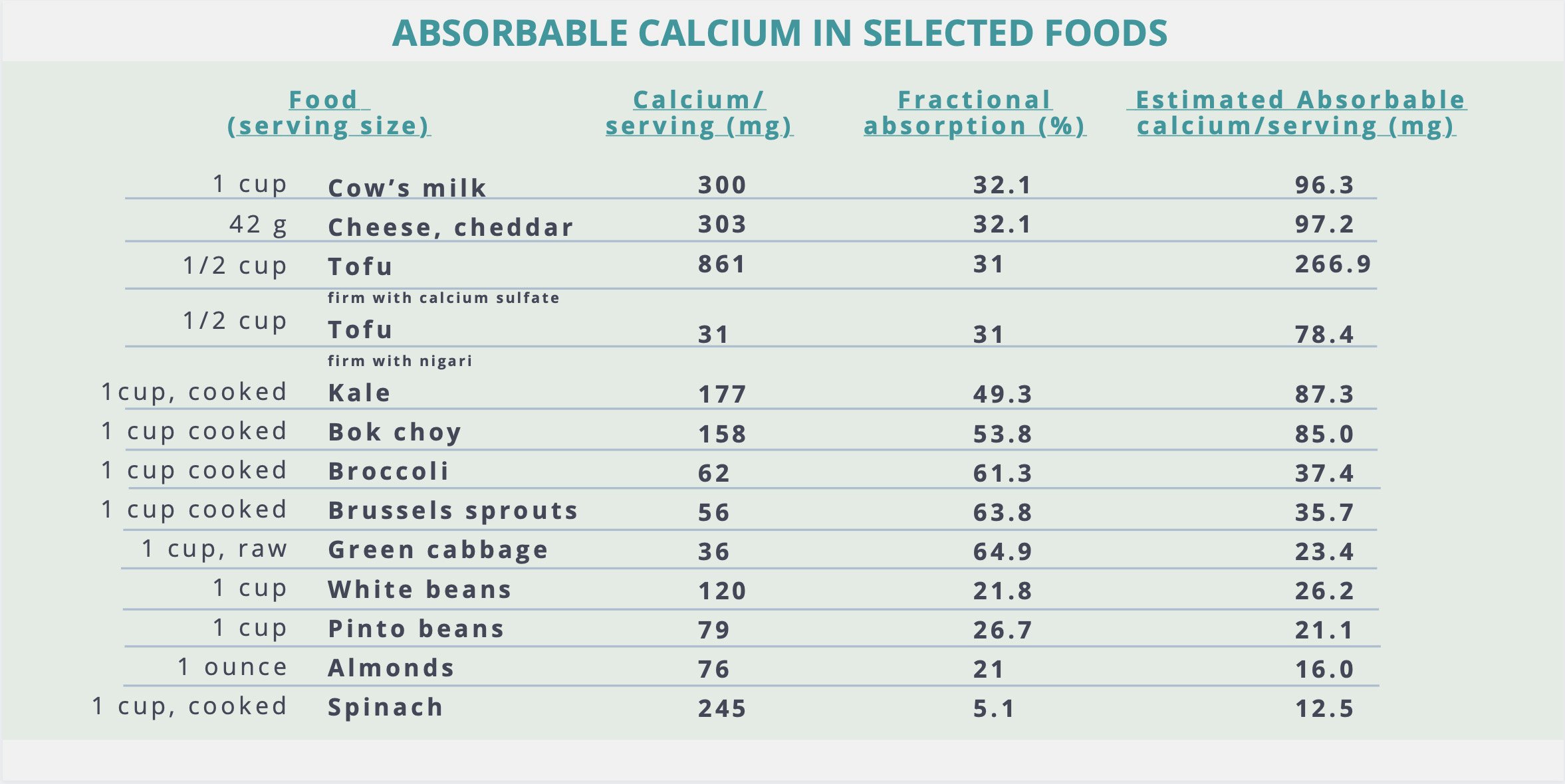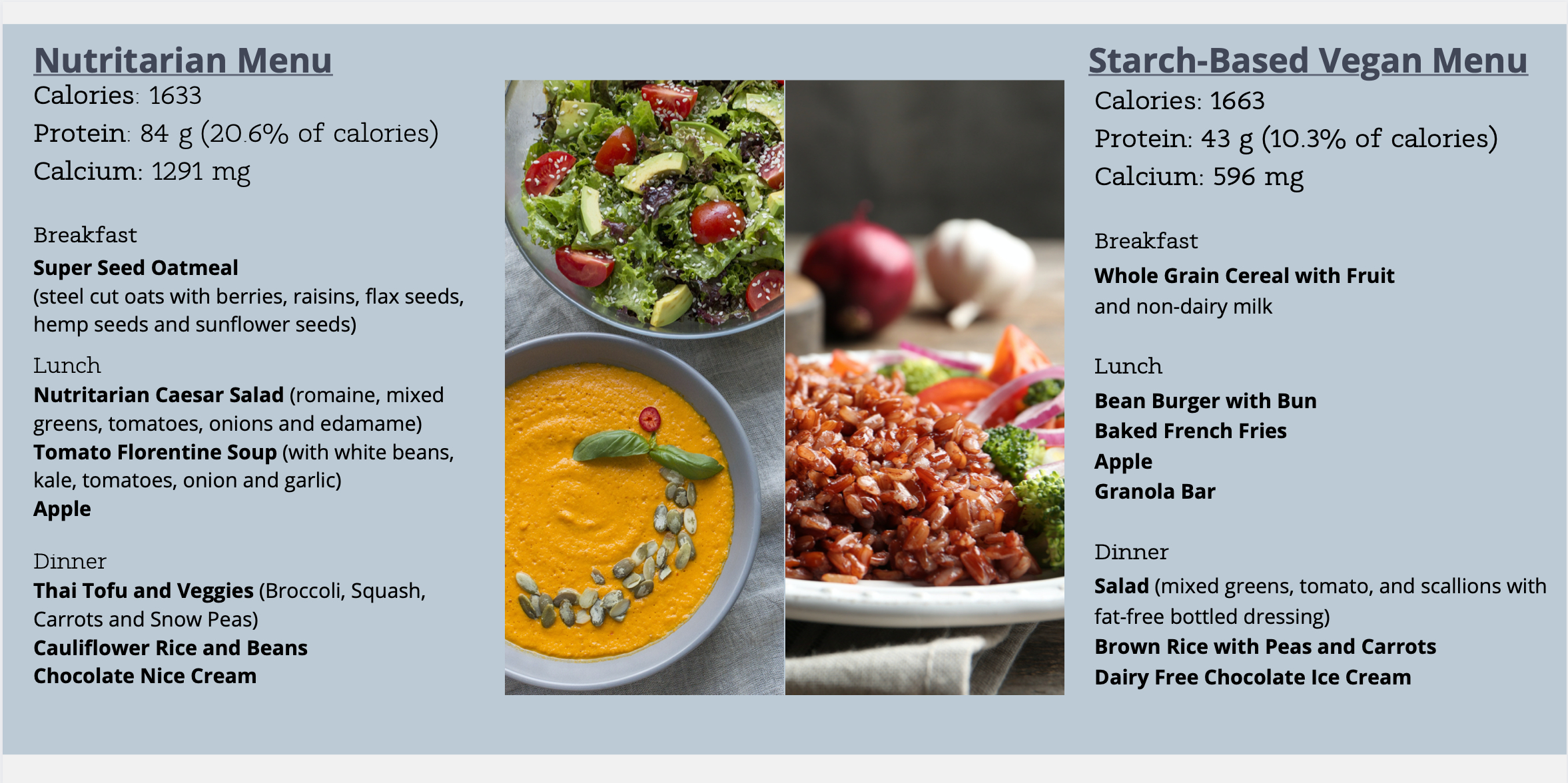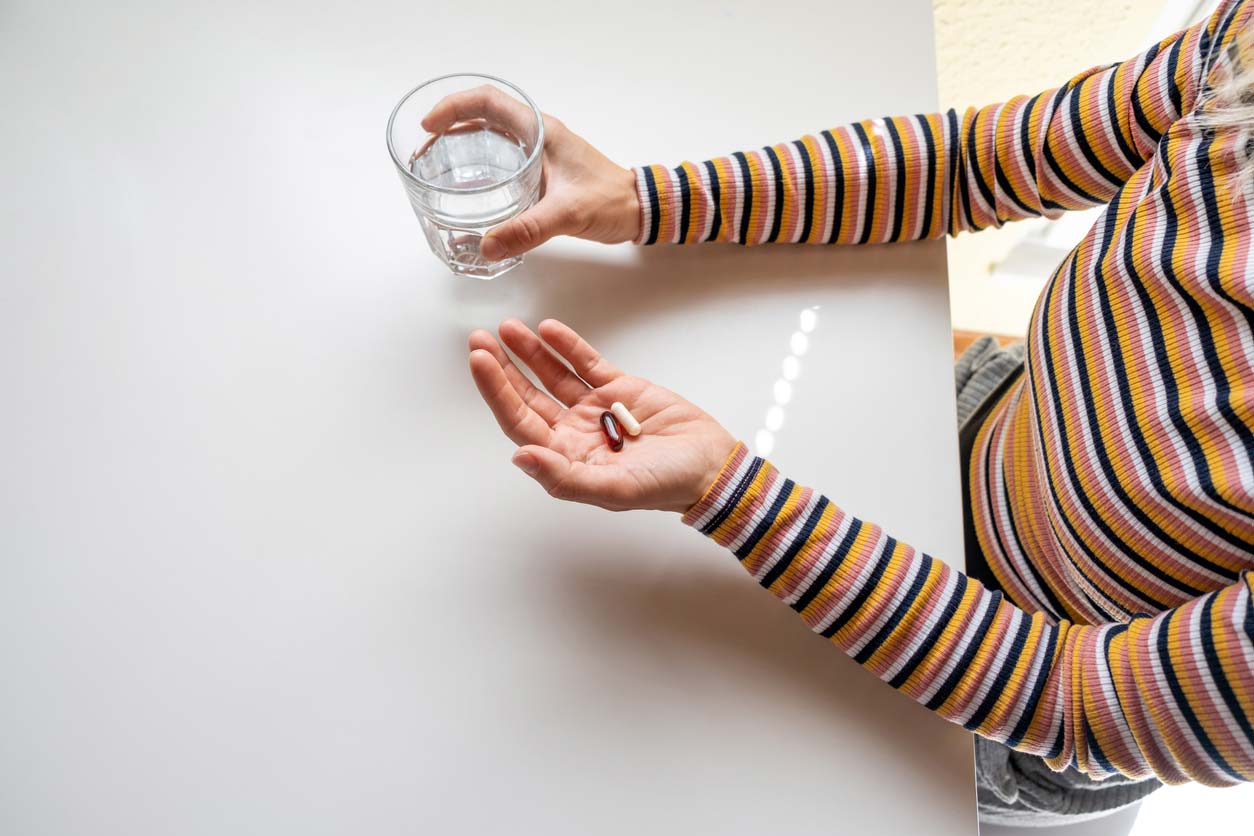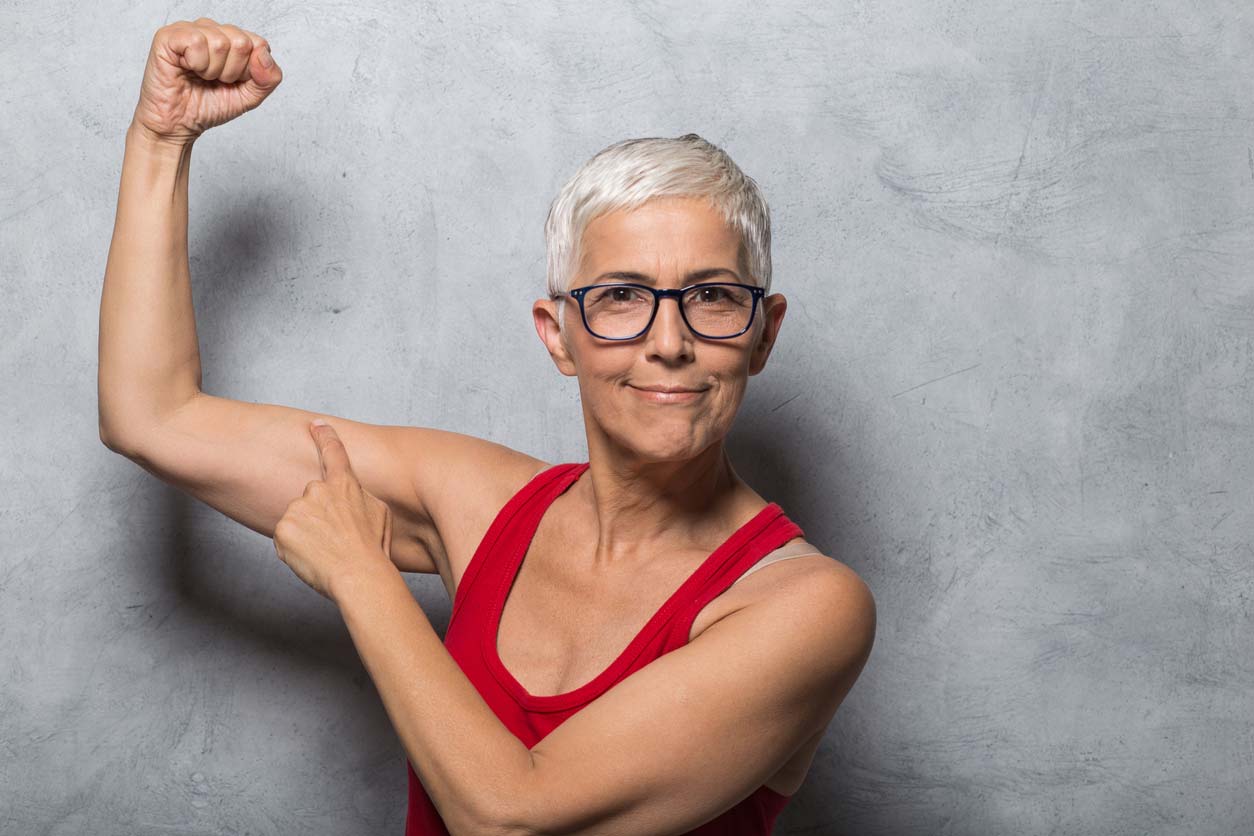By Joel Fuhrman, MD • A version of this article was originally published on DrFuhrman.com.
A study published in November 2020 on 54,898 people living in the UK, 1,982 of whom were vegan, found a greater risk of total and site-specific hip fractures in vegans compared to meat-eaters after an average follow-up of 17.6 years.1 The authors were able to attribute some of the risk of fractures to low BMI and lower calcium and protein intakes among vegans.
A relatively large number of vegans — 17% of vegan men and 28% of vegan women — had BMI below 20, which might indicate illness or low muscle mass and could negatively affect bone density. Notably, when they divided the vegans into groups by BMI, a significantly higher risk of total and site-specific hip fractures was only found in vegans with BMI below 22.5. Of course, overweight people carrying more weight have bigger muscles and bones, and fewer fractures — but they don’t live as long.2,3
The question remains, can we get enough protein for excellent muscle and bone density, maintain a lifespan-favorable BMI, and still prevent fractures?
In this study, the average protein intake was 12.9% and 13.5% of calories for vegan men and women (which may be a bit low for the elderly), and 16% and 17.3% for meat-eaters. Calcium intake was 1,058 and 989 mg/day for meat-eating men and women, and 611 and 580 mg/day for vegan men and women. This low calcium intake likely reflects insufficient green vegetables by the vegans in the study.
The Study’s Disclaimer
The authors noted these factors — BMI, calcium intake, and protein intake — did not fully explain the difference in fracture risk between meat-eaters and vegans, saying additional unknown factors likely also contributed.
For example, the researchers had no information on what supplements participants were taking or what type of exercise they engaged in. Rates of regular exercise were low in all groups but higher in vegans; 29% of meat-eaters and 41% of vegans reported engaging in “moderate or high physical activity.”
Other Contributors to Vegan Bone Health
Insufficient vitamin D, strength training, or intake of green vegetables and other bone-protecting plant foods could potentially be contributors to more fractures. In other studies, diets higher in vegetables, fruits, minerals, and phytochemicals are linked to better bone health.4-6
Plant Protein from Beans, Nuts, and Seeds
Vegans did consume more legumes, nuts, vegetables, and fruits than meat-eaters. But on average, vegetable intake was only 173-200g/day, which is less than two cups of vegetables daily.
Average legume intake was 30g/day, which is only one-sixth of one cup of beans or lentils. Average intake of nuts was less than one ounce/day. And seed intake was not mentioned in the study at all. This low intake of whole plant foods suggests the vegans in the study were likely getting too many calories from refined carbohydrates and processed foods.
More Plant Protein Improves Health and Lifespan
Certainly, the evidence is conclusive that a high-animal protein diet increases cancer risk and shortens lifespan,7-11 but we need sufficient protein to support muscle growth and bone mass, especially as we get older.12 One important thing to note is that older adults are most vulnerable to bone loss, osteoporosis, and fractures. Absorption and assimilation of protein and calcium decreases with aging, increasing the protein and calcium requirements for older populations compared to younger people.
The Nutritarian Difference
A Nutritarian diet may be low in animal protein, but it also contains more plant protein compared to most other plant-based diets. Getting enough protein on a vegan diet isn’t difficult, but it does require attention to nutritional variety. Relying on high-glycemic, low-protein foods like refined carbohydrates, rice, and potatoes for most of your calories will likely result in inadequate protein as well as a high glycemic load. This is also detrimental to bone health as a higher blood glucose level is not good for the bones.13,14
Other high-credence studies with large numbers of participants have corroborated this — that more protein-rich plant foods lead to better health and longer lifespan. And more protein-rich animal products lead to worse health outcomes and a shorter lifespan.11,15-19 The secret sauce here is to eat more protein-adequate plant foods.
A diet with a variety of plant protein sources — beans (including soybeans), seeds, nuts, and vegetables — provides adequate (but not excessive) amounts of protein and a more complete array of each essential amino acid.20 Certain plant foods are higher or lower in certain essential amino acids, and a variety of foods ensures we don’t have a low intake of any particular one. This is important for bone health since certain essential amino acids, including lysine, which is higher in legumes than many other plant foods, may facilitate collagen formation.20-22
Protein is Necessary for Bone & Muscle Mass
Protein needs are greater for adults over approximately age 70.23,24 In addition to increasing their intake of legumes and seeds, older adults who experience loss of bone or muscle mass with aging might consider adding a plant-based protein supplement (such as pea, hemp, or pumpkin protein).
Previous data on bone health in vegans, vegetarians, and non-vegetarians from the Adventist Health Study suggests adequate protein intake is an important strategy for preventing fractures. Greater plant protein intake was associated with a lower risk of wrist fractures in vegetarian women. And greater intake of legumes and meat substitutes were associated with a lower risk of hip fractures in men and women.22,25
Calcium-Rich Foods
Most people don’t consume enough calcium-rich plant foods such as beans and green vegetables. Bone tissue is made up of mostly calcium phosphate and collagen, with 99% of the calcium in the body stored in our bones. Adequate dietary calcium is necessary for strong bones. Although dairy products are not health-promoting, non-vegans most often get adequate calcium because of dairy intake. Plant foods can provide adequate calcium (along with other minerals, vitamins, fiber, and phytochemicals). But vegans must pay attention to eating these calcium-rich foods. How much calcium we absorb varies depending on the food source as you can see in the table below.26
Nutritarian Diet vs. Starch-Based Vegan Diet
Supplements: Vitamin D and K2
In the study outlined above, the researchers did not have data on what supplements the participants took. It is possible that lack of supplementation, especially vitamin D, could have contributed to the elevated fracture risk in vegans in the study.
About 35% of Americans do not meet the recommended intake of vitamin K. And for vitamin D, the number is even larger – 70% don’t meet the recommended intake daily.30 Nevertheless, it was unlikely the vegans were more deficient in Vitamin D compared to the meat-eating cohort, though it still is something to be aware of.
Vitamin D is important for bone health because it regulates the absorption of calcium and phosphorus, which are major components of bone tissue. Deficiency in vitamin D increases the risk of fractures.31,32
A vast amount of research supports a blood concentration of vitamin D (as measured by 25(OH)D) in the 30-45 ng/ml range for fracture prevention.33 I recommend most people supplement to achieve such a blood level, so they can avoid excessive skin aging and skin damage from too much sun exposure. Two-thousand IU (50 mcg per day) is an appropriate dose for most adults to be able to achieve this favorable range in the blood. Awareness of all components that can affect fracture risk and falls is important.
Green vegetables are the richest source of vitamin K1; vitamin K2 is produced by microorganisms and is low in plant foods. Supplementation trials using vitamin K2 in postmenopausal women have found notable reductions in fracture risk: a 60% reduction in vertebral fracture, 77% for hip fracture, and 81% for all non-vertebral fractures.34,35 I recommend getting K1 from green vegetables and supplementing with a moderate dose of K2 to help maintain bone density with aging.
Appropriate Calcium Supplementation
For many people, green vegetables, beans, nuts, and seeds most likely provide enough calcium without the need for supplements. However, calcium requirements are higher for certain groups. Pregnant, nursing, and postmenopausal women, as well as those with osteopenia or osteoporosis, and those with a small appetite for green vegetables, might consider adding a small dose of supplemental calcium spread out with each meal to ensure sufficient calcium intake. I recommend using a lower dose, food-derived calcium supplements (whole powdered seaweed, for example, at a dose of 200-300 mg/meal) to add to the calcium already in the meal. Thus avoiding a huge amount of concentrated calcium coming in all at once. I do not recommend high-dose (1000 mg or more) calcium supplements because there is preliminary (though still inconclusive) evidence that those high doses may be harmful to the cardiovascular system.36,37
Exercise
Food provides the raw material, but exercise is essential for building muscle and maintaining bone mass.
Strength training and weight-bearing exercise (such as running and jumping) are effective at building bone strength.38-40 These types of exercise stimulate activity in bone-building cells, leading to denser, stronger bones.
The Meat of the Story
The conclusion here is that the recent findings that vegans are at higher risk of fractures are consistent with other studies that show that paying attention to plant protein is important for those following vegan diets. A Nutritarian diet is the gold-standard of plant-based diets as the dietary portfolio is rich in the most health and longevity-promoting foods — which are also good for the bones. The evidence is clear — to assure excellent health and longevity, the intelligent and conservative use of some supplements is indicated.
Let’s face reality here — a healthier diet is healthier than one that is less healthy. As ridiculous as that sounds many people are trying to pawn off the idea that even a haphazardly designed diet is fine as long as you don’t eat animal products. The facts point to the conclusion that many vegans are not eating healthfully enough. If you follow my advice in this article (or you are already following a Nutritarian diet), then that will not be you!
References
- Tong TYN, Appleby PN, Armstrong MEG, et al. Vegetarian and vegan diets and risks of total and site-specific fractures: results from the prospective EPIC-Oxford study. BMC Med 2020, 18:353.
- Yu E, Ley SH, Manson JE, et al. Weight History and All-Cause and Cause-Specific Mortality in Three Prospective Cohort Studies. Ann Intern Med 2017, 166:613-620.
- Global BMC, Di Angelantonio E, Bhupathiraju Sh N, et al. Body-mass index and all-cause mortality: individual-participant-data meta-analysis of 239 prospective studies in four continents. Lancet 2016, 388:776-786.
- Tucker KL, Hannan MT, Chen H, et al. Potassium, magnesium, and fruit and vegetable intakes are associated with greater bone mineral density in elderly men and women. Am J Clin Nutr 1999, 69:727-736.
- New SA, Robins SP, Campbell MK, et al. Dietary influences on bone mass and bone metabolism: further evidence of a positive link between fruit and vegetable consumption and bone health? Am J Clin Nutr 2000, 71:142-151.
- Sacco SM, Horcajada MN, Offord E. Phytonutrients for bone health during ageing. Br J Clin Pharmacol 2013, 75:697-707.
- Huang, Jiaqi, PhD, et al. Association Between Plant and Animal Protein Intake and Overall and Cause-Specific Mortality. JAMA Internal Medicine 2020, 180:1173-1184.
- Levine ME, Suarez JA, Brandhorst S, et al. Low protein intake is associated with a major reduction in IGF-1, cancer, and overall mortality in the 65 and younger but not older population. Cell Metab 2014, 19:407-417.
- Lagiou P, Sandin S, Lof M, et al. Low carbohydrate-high protein diet and incidence of cardiovascular diseases in Swedish women: prospective cohort study. BMJ 2012, 344:e4026.
- Key TJ. Diet, insulin-like growth factor-1 and cancer risk. Proc Nutr Soc 2011:1-4.
- Song M, Fung TT, Hu FB, et al. Association of Animal and Plant Protein Intake With All-Cause and Cause-Specific Mortality. JAMA Intern Med 2016, 176:1453-1463.
- Campbell WW, Trappe TA, Wolfe RR, Evans WJ. The recommended dietary allowance for protein may not be adequate for older people to maintain skeletal muscle. J Gerontol A Biol Sci Med Sci 2001, 56:M373-380.
- Levinger I, Seeman E, Jerums G, et al. Glucose-loading reduces bone remodeling in women and osteoblast function in vitro. Physiol Rep 2016, 4.
- Oei L, Zillikens MC, Dehghan A, et al. High bone mineral density and fracture risk in type 2 diabetes as skeletal complications of inadequate glucose control: the Rotterdam Study. Diabetes Care 2013, 36:1619-1628.
- Virtanen HEK, Koskinen TT, Voutilainen S, et al. Intake of different dietary proteins and risk of type 2 diabetes in men: the Kuopio Ischaemic Heart Disease Risk Factor Study. Br J Nutr 2017, 117:882-893.
- Tharrey M, Mariotti F, Mashchak A, et al. Patterns of plant and animal protein intake are strongly associated with cardiovascular mortality: the Adventist Health Study-2 cohort. Int J Epidemiol 2018.
- Budhathoki S, Sawada N, Iwasaki M, et al. Association of Animal and Plant Protein Intake With All-Cause and Cause-Specific Mortality. JAMA Intern Med 2019.
- Huang J, Liao LM, Weinstein SJ, et al. Association Between Plant and Animal Protein Intake and Overall and Cause-Specific Mortality. JAMA Intern Med 2020.
- Naghshi S, Sadeghi O, Willett WC, Esmaillzadeh A. Dietary intake of total, animal, and plant proteins and risk of all cause, cardiovascular, and cancer mortality: systematic review and dose-response meta-analysis of prospective cohort studies. BMJ 2020, 370:m2412.
- Young VR, Pellett PL. Plant proteins in relation to human protein and amino acid nutrition. Am J Clin Nutr 1994, 59:1203S-1212S.
- Jennings A, MacGregor A, Spector T, Cassidy A. Amino Acid Intakes Are Associated With Bone Mineral Density and Prevalence of Low Bone Mass in Women: Evidence From Discordant Monozygotic Twins. J Bone Miner Res 2016, 31:326-335.
- Lousuebsakul-Matthews V, Thorpe DL, Knutsen R, et al. Legumes and meat analogues consumption are associated with hip fracture risk independently of meat intake among Caucasian men and women: the Adventist Health Study-2. Public Health Nutr 2014, 17:2333-2343.
- Volpi E, Campbell WW, Dwyer JT, et al. Is the optimal level of protein intake for older adults greater than the recommended dietary allowance? J Gerontol A Biol Sci Med Sci 2013, 68:677-681.
- Bauer J, Biolo G, Cederholm T, et al. Evidence-based recommendations for optimal dietary protein intake in older people: a position paper from the PROT-AGE Study Group. J Am Med Dir Assoc 2013, 14:542-559.
- Thorpe DL, Knutsen SF, Beeson WL, et al. Effects of meat consumption and vegetarian diet on risk of wrist fracture over 25 years in a cohort of peri- and postmenopausal women. Public Health Nutr 2008, 11:564-572.
- Weaver CM, Plawecki KL. Dietary calcium: adequacy of a vegetarian diet. Am J Clin Nutr 1994, 59:1238S-1241S.
- USDA Food Data Central [https://fdc.nal.usda.gov/index.html]
- Mangels R, Messina G, Messina M: The Dietitian’s Guide to Vegetarian Diets. Jones & Bartlett; 2011.
- Weaver CM, Proulx WR, Heaney R. Choices for achieving adequate dietary calcium with a vegetarian diet. Am J Clin Nutr 1999, 70:543S-548S.
- Fulgoni VL, 3rd, Keast DR, Bailey RL, Dwyer J. Foods, fortificants, and supplements: Where do Americans get their nutrients? J Nutr 2011, 141:1847-1854.
- Brincat M, Gambin J, Brincat M, Calleja-Agius J. The role of vitamin D in osteoporosis. Maturitas 2015, 80:329-332.
- Holick MF. Sunlight and vitamin D for bone health and prevention of autoimmune diseases, cancers, and cardiovascular disease. American Journal of Clinical Nutrition 2004, 80:1678S-1688S.
- Bischoff-Ferrari HA. Vitamin D and fracture prevention. Rheumatic Diseases Clinics of North America 2012, 38:107-113.
- Feskanich D, Weber P, Willett WC, et al. Vitamin K intake and hip fractures in women: a prospective study. Am J Clin Nutr 1999, 69:74-79.
- Cockayne S, Adamson J, Lanham-New S, et al. Vitamin K and the prevention of fractures: systematic review and meta-analysis of randomized controlled trials. Arch Intern Med 2006, 166:1256-1261.
- Bhattacharya RK. Does widespread calcium supplementation pose cardiovascular risk? No: concerns are unwarranted. Am Fam Physician 2013, 87:Online.
- Reid IR, Bolland MJ. Does widespread calcium supplementation pose cardiovascular risk? Yes: the potential risk is a concern. Am Fam Physician 2013, 87:Online.
- Rubin C, Turner AS, Muller R, et al. Quantity and quality of trabecular bone in the femur are enhanced by a strongly anabolic, noninvasive mechanical intervention. Journal of Bone and Mineral Research 2002, 17:349-357.
- Marques EA, Mota J, Machado L, et al. Multicomponent training program with weight-bearing exercises elicits favorable bone density, muscle strength, and balance adaptations in older women. Calcified Tissue International 2011, 88:117-129.
- Howe TE, Shea B, Dawson LJ, et al. Exercise for preventing and treating osteoporosis in postmenopausal women. Cochrane Database Syst Rev 2011:CD000333.
Tell us in the comments:
- Do you get enough protein and calcium in your diet?
- What plant-based sources of protein and calcium are your favorite?
- If you’re vegan or plant-based, how else are you supporting your bone health?
Feature image: iStock.com/Jan-Otto
